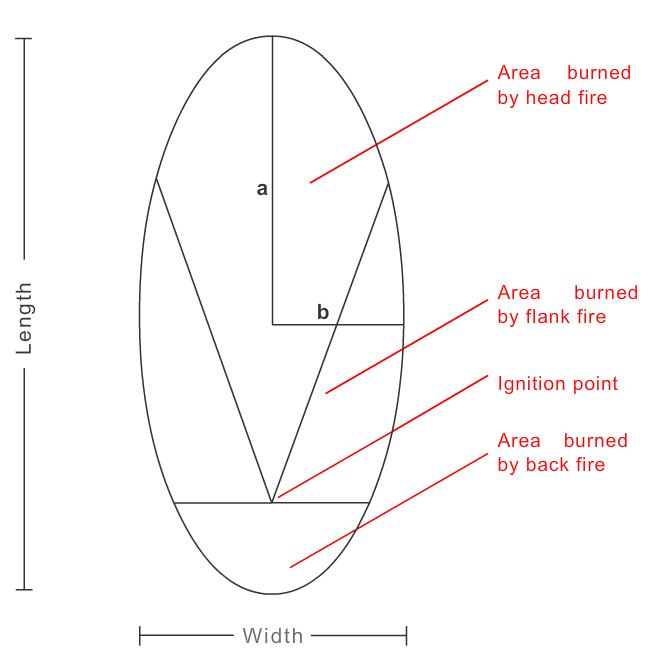Growth and Propagation
The following terminology is regularly used in classifying the growth and propagation of fires:
- Spotting - Method of fire growth, in which firebrands (or burning embers) are lifted outside the fire perimeter by the smoke column (Werth and Ochoa, 1993, p.223).
- Head fire - Fire ahead of the ignition point in the direction the wind (see Figure 4.1).
- Back fire - Fire to the back of the ignition point, in the opposite direction of the wind (see Figure 4.1). Parameters like "back fire rate of spread" and "back fire intensity" are usually used to describe fire behaviour.
- Flank fire - Fire ahead of the ignition point, but spreading perpendicularly to the direction of the wind (see Figure 4.1). Parameters like "flank fire rate of spread" and "flank fire intensity" are usually used to describe fire behaviour.
(Forestry Canada, 1992, p.43)
NOTE: the term back fire is sometimes used to describe a fire that is started (by fire managers) to stop an advancing fire by creating a burned area in its path.
Fig 4.1 - Typical oval shape of a wind-driven point-source fire, assuming the wind direction remains relatively constant. Representation of the ignition point and the areas burned by head fire, flank fire and back fire (Forestry Canada, 1992).
